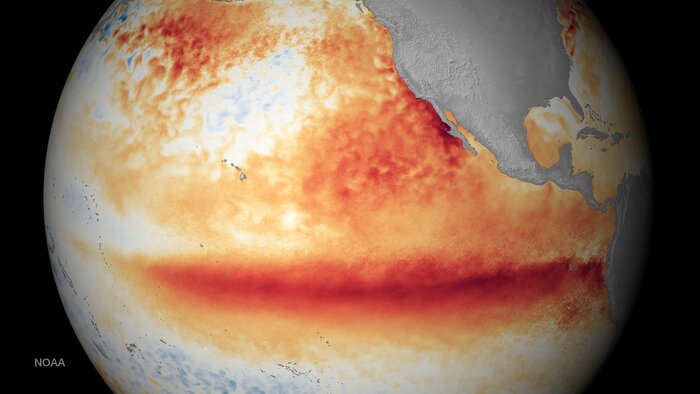The passage of El Niño, currently underway, may increase the risk of reaching record air temperatures until June this year, with the likelihood of extreme events.
Among the areas most involved.
the Bay of Bengal, the Philippines and the Caribbean Sea, but also the Amazon and Alaska, where the probability of fires, tropical cyclones and heat waves will also be greater.
This is indicated by the study published in the journal Scientific Reports and led by the Chinese Academy of Meteorological Sciences.
El Niño is the climatic phenomenon that occurs on average every five years, causing a strong warming of the surface waters of the central-southern and eastern Pacific Ocean, particularly in the period between December and January, with effects that have repercussions on the climate of the whole the planet.
"As is known, a long-term trend is already underway which sees global temperatures rising as a result of climate change caused by human activities", Lorenzo Giovannini, an atmospheric physicist at the University of Trento, tells ANSA.
"To this trend is added natural variability, which can cause oscillations in one direction or another. One of these variables, perhaps the most important, is El Niño itself: it is in fact well established - he observes - that the years in which this phenomenon occurs are characterized by higher temperatures".
The authors of the research, led by Ning Jiang and Congwen Zhu, carried out simulations of the effects of El Niño between July 2023 and June 2024, also using data recorded from 1951 to 1980. They thus discovered that when the phenomenon has a moderate intensity, the areas most at risk of record-breaking air temperatures are limited to the Bay of Bengal and the Philippines.
Instead, in the event that El Niño proves to be more intense, the Caribbean Sea, the South China Sea and several areas of the Amazon and Alaska will also be affected.
"According to the latest forecasts provided by Noaa, the US National Oceanic and Atmospheric Agency, however, El Niño is already moving towards its end", adds the expert from the University of Trento: "In late spring or at the beginning of summer the transition to La Niña could occur, which instead causes a cooling of the waters of the Pacific".
La Niña, in fact, is a condition opposite to El Niño and pushes air rich in humidity towards the Indonesian and Australian coasts.
As long as the 'brother' still rages, however, its effects could extend to average surface temperatures across the globe: with a moderate to strong El Niño, the authors of the study estimate a 90% probability that the phenomenon will translate into temperatures high global averages, with an increase from 1.03 to 1.20 degrees compared to the average of the reference period 1951-1980.
"Europe is also influenced by the phenomenon - concludes Giovannini - but the effects are much weaker and more variable".
Reproduction reserved © Copyright ANSA

